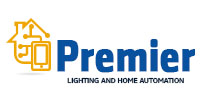In the fast-paced world of today’s executives, managing time and resources efficiently isn’t just a goal—it’s a necessity. What was once the realm of science fiction, home automation technology has evolved to offer seamless integration into the lives of professionals seeking convenience, comfort, and control. In this guide, we delve into the best smart technology that transforms your house not only into a home but a modern fortress of productivity and leisure.
Home Automation: The Command Center of Convenience
The core of any smart home lies in its home automation system—the brains of the operation. It harmonizes the myriad of connected devices within your residence, allowing for a symphony of synchronicity. Imagine walking through your door and, with a simple command or a tap on your smartphone, the environment adapts to your desired settings. The lights dim, the temperature adjusts, and your favorite playlist starts to fill the home.
Smart Home: An Ecosystem of Efficiency
What distinguishes a smart home from a house with a few smart gadgets is the interconnected ecosystem. A smart home is an integrated network of devices that communicate and cooperatively work together. From smart security systems to intelligent refrigerators that can order groceries when supplies run low, each element is designed to make life smoother.
Home Theater: A Cinematic Refuge
For the executive who appreciates the finer things in life, a home theater—or home theatre for the aficionados—offers an unrivaled experience. The high-definition video, coupled with a state-of-the-art sound system, offers an immersive cinematic journey within the comfort of your abode. With custom seating and sophisticated acoustics, it’s not just about watching a film; it’s about living it.
Smart Lighting: Set the Perfect Ambience
Reduced energy consumption and a diverse range of settings make smart lighting a bright idea for any executive home. Whether it’s setting the mood for a relaxed evening or ensuring adequate lighting for a home office, these intelligent lights can be manipulated to accommodate your needs. Picture this: you’re about to start a presentation, and with one command, your room is lit in a way that highlights your professionalism.
Voice Commands (Alexa): Your Personal Assistant
Voice command technology, embodied by systems like Amazon’s Alexa, has become akin to having a personal assistant ready at all times. These AI-driven helpers can manage tasks from reading your schedule, ordering a car, or even preemptively adjusting your home’s conditions according to the weather forecast—all executed through simple voice commands.
Multi-Zone Audio: Orchestrating Excellence Across Spaces
Multitasking takes a melodious turn with multi-zone audio systems. They enable you to play different music in various rooms simultaneously or have your favorite podcast follow you from room to room. Music has never been more woven into the fabric of your everyday life.
We’ve only begun to scratch the surface of smart technology that can benefit an executive’s home, available both for convenience and enjoyment. The transformation towards a fully automated home is a journey—a testament to the innovation and forward-thinking that characterizes successful leadership.
And while our homes grow smarter, and our lives busier, let’s not forget that technology is ultimately a tool—a means to an end, with that end being a simpler, more joyful, and efficient existence. So step into the future, embrace the tranquil melody of smart living, and watch as your home does more than shelter; it anticipates, it caters, and it astonishes. Welcome to your smart home, where your executive prowess meets domestic bliss.



